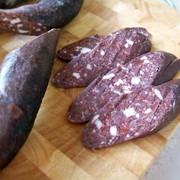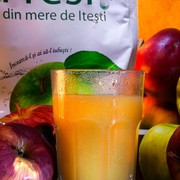Dolceacqua is a medieval village of the Nervia valley placed along the river of the same name. Its older part, dominated by the Doria's castle, is called Terra and situated at the foot of Mount Rebuffao. The newer part, called Borgo,is situated on the opposite bank of the river along the road that climbs up the valley
History
Almost certainly the name Dolceacqua comes from the presence, in Roman times, of a village called Dulcius. The name was first changed in Duciaca (Dusaiga is the dialectform used nowadays) and finally in Dulcisaqua. According to another interpretation, the origin of the village's name is due to the Celts that called it Dus-Saga, changed first in Dusaga and then in Dolceacqua.
The oldest testimonies of the population are the castellari of the Iron Age, fortifications made up of dry-stone wall rings, that were situated on the heights along the watershed of the Nervia and the Roya valleys. The archaeological findings confirm that these strongholds of territorial defence, to protect villages, pastures and fields, were garrisoned by the Intemeli from the Vth century B.C. until the IVth century A.D. (in full Roman age) .
The first document that mentions Dolceacqua dates back to 1151: as a matter of fact, it was just in the XIIth century that the Counts of Ventimiglia built the first core of the castle on the top of the spur that dominates strategically both the first bottleneck and the valley fork towards Rocchetta Nervina and the Roya valley on one side, and the middle and upper Nervia valley on the other, controlling all the accesses.The castle was bought in 1270 by Oberto Doria, the Captain of the Genoese, the winner of the Pisaniat Meloria. Afterwards the building was widened by his successors and the built-up area at the foot of the castle around the fort, connected by steep slopes. The waters of river Nervia were carried to feed the fountains and to irrigate the fields.
The Castle
The Doria castle underwent many transformations. The original plant, protected at the end of the XIIth century by the circular tower, was enlarged and incorporated in a larger ring of walls in the XIVth century. During the Renaissance the castle became an imposing, fortified residence, with new rooms, rich in frescoes and furnishings, around the central court; the residence was then completed by impressive defensive devices.
The castle could not oppose the French-Spanish heavy artillery and was partially destroyed on July 27,1744 during the Austrian succession war. The Dorias abandoned the castle and moved to the XVIth century palace near the parish church, and the building underwent its last damage with the earthquake of 1887.
The castle became a property of the municipality of Dolceacqua and, already seat of summer performances, is undergoing restoration works and has been assigned to cultural functions .
Even nowadays the Terra quarter maintains its medieval atmosphere intact and offers many picturesque spots, where time seems to have stopped. Since then the story of Dolceacqua is linked to the events of its castle and to the Signory of the Dorias, a dinasty, that was under the Savoyan protection and at the head of the Marquisate of Dolceacqua from 1652. Monuments and places of interest
Civil Architecture
. The bridge
In the second half of the XVth century the inhabited place grew along via Castello, the main urban road axis, and a new quarter called Borgo was built beyond the Nervia river; the two parts of the town were connected by a cambered bridge with only one arc-span, of 33 metres. The bridge, that Claude Monet had painted in 1884 (defining it "a jewel of lightness"), together with the houses of Terra and the overwhelming castle, is one of the most picturesque and famous views of the Ligurian inland.
Religious Architecture
. Parish church of Saint Antonio Abbot
At the foot of the Terra quarter, the XVth century church incorporates a square angular tower of the ancient walls, that had become the base of the belltower. The sacred building was rebuilt in Baroque style and it is painted with rich decorations inside; it keeps the precious and refined polyptych of Santa Devota, painted in 1515 by Ludovico Brea, the leader of the Ligurian-Nice pictorial trend.
. San Giorgio's church
At the entrance of the village, near the graveyard, was built in Romanesque style, still visible in the facade and in the inferior part of the bell-tower. Afterwards the church was rebuilt in Gothic and Baroque times. In the crypt, which had become the Marquis family-vault, there are the tombs of Stefano Doria (1589) and of Giulio Doria (l608), portrayed on the coverings labs in armours of the time. The wooden ceiling keeps some rare trusses painted in the XVth century.
. Agostinian Father's monastery
The ruins facing south of the village in a panoramic position, remind us that this religious centre was an annex of the Piedmontese Abbey of Novalesa near Susa and also that this was the first stage of a historical run which connected the Ligurian sea bank to the Alpine passes.
. Sanctuary of the Addolorata
East of the village, in the area called Morghe, built in 1890; every year it is the destination of a pilgrimage which is also an occasion of convivial meetings, repeated for some days, after a solid local tradition.
. Rural chapels
On the surrounding hills there are many, surrounded by secular vineyards and olive groves; among them we remember San Bernardo's, which keeps some frescoes of the XVth century by the painter Emanuele Maccari from Pigna. Near the confluence of the Barbaira stream with the Nervia torrent there is San Martino's chapel, characterised by the unusual dome-sloped roof. Among the most ancient chapels we can remember also those of San Rocco and of San Cristoforo.In the Borgo quarter there is the oratory of San Sebastiano, where we can admire a valuable wooden sculpture ascribed to Maragliano; it is the seat of a Confraternity that celebrates the martyrdom of the Saint on the Sunday that is closer to 20th January with a solemn procession. In this occasion they carry a big laurel tree decorated with multicoloured hosts, that is a symbol of plenty in agricultural crops: a clear heritage of a pagan ceremony connected to the cycle of the death and of the resurrection of the vegetation.
Traditions
Dolceacqua is a faithful keeper of other traditions; the most important of them is the Festa della Michetta (the michetta is a typical local cake), which takes place on the l6th August to remind the people of the end of the infamous jus primae noctis that the tyrant Imperiale Doria claimed from the young brides of the village. This was cancelled, together with some other injustices, by a popular rebellion. Since then the simple cake, a kind of brioche with a particular shape, is asked by the boys as a sign of liking during a merry musical raid along the streets of the village.
At Christmas, in the two principal squares of Borgo and Terra quarters some big bonfires are lighted. They are a symbol of participation to the cosiest holiday of the year.
Products
The terraced hills, supported by drystone walls, are a witness of the secular toils and of the tenacity of the Ligurian countrymen to get a little land to till. The village is famous also for the production of the Rossese di Dolceacqua, a DOC ruby red wine with a typical soft, aromatic and sweet taste ).The Rossese is obtained from a unique vine and it has a limited production.
The silver olive groves produce the olives which are picked after being beaten down (abbacchiatura): the men get on the trees, strike the branches, laden with fruits, again and again with a long rod. Afterwards, in the oil-presses, there is the crashing in a kind of big cointainer called gombo, where the olives are smashed; then this pulp is put in layers and squeezed: the final result is the extra-virgin olive oil, an excellent local product that is very requested.
Near the village there are many greenhouses and open air flower growings, thanks to the mildness of the climate. They represent the primary economic activity of the place with the production of roses, mimosas, brooms and decorative green plants that are daily picked up and sent to the flower market of Sanremo.
Transportation
Dolceacqua is situated along the provincial road 64 which links Ventimiglia with Castel Vittorio. The municipality is not directly accessible by highway, so the highway exits Ventimiglia or Bordighera on the A10 highway are recommended to reach the destination.
The railway station of Ventimiglia is the nearest train stop on the line Ventimiglia-Genoa in the local stretch between Ventimiglia and Savona.
https://www.youtube.com/watch?v=oq0oJI4G_Pg
https://www.youtube.com/watch?v=FRhqkaPwUBwhttps://www.youtube.com/watch?v=FRhqkaPwUBw
Source : www.dolceacqua.it





















